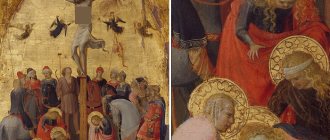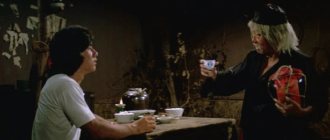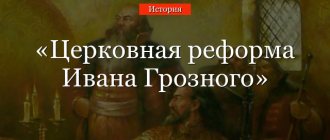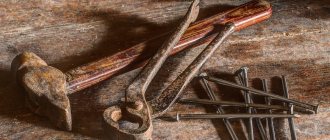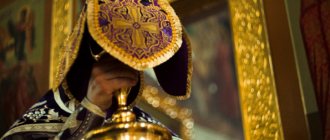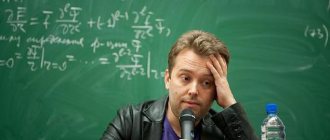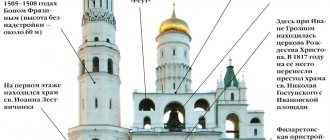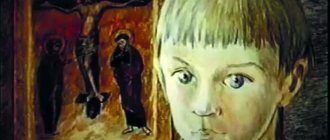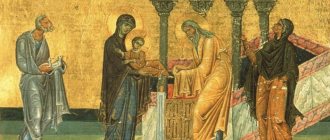Ghosts. 2008
The Arkhangelsk and Vologda regions are our beautiful Russian North, which is gradually becoming a “bear corner”. The generation that remembered life before the revolution has already passed, and younger people are leaving these places. This is our national tragedy.
It’s scary when you walk through a village in which 100 years ago life was in full swing - there were fairs, trade routes, hundreds and thousands of people lived - and now everything is over. For example, the now former village of Kerga on Pinega, which was once the ancient Russian center of these places. Now it is abandoned, and many houses have been dismantled and taken to other villages.
In this work I tried to convey the feeling that arises when you walk through an empty village, surrounded by huts in the proportions of the Parthenon, with windows like broken teeth. When you find yourself in such places, it seems that you are walking through the native ashes of Russian peasant culture.
It seems to me that the people who lived there and built these houses are watching you from the broken windows. You are looking for something, you want to find answers to some questions, but there is nothing left, everything is overgrown with weeds taller than human height.
2.
Family portrait. 2003
“Family Portrait” was written when I had only two daughters – Olya and Glasha. We then finally moved into our own house and created the atmosphere for family and artistic life that I always wanted.
Olya and Glasha then began to study in the Veretentse ensemble, where I sent them, because I always revered folklore and the real folk tradition of song, which was kept under wraps throughout Soviet times. My daughters immediately began to bring home amazing folklore harmonies, began to sing, and I realized that this would be love for them for a long time.
This is not a staged portrait, but a snapshot from my life. I imagined such a moment - the children were listening to music, and behind me on the sofa was a slightly tired mother, my wife Yulia, who was looking at them even with some surprise. In this composition and their natural arrangement, I saw an interesting formal-informal task for painting.
Children are very difficult to write, they absolutely cannot understand why you need to freeze and stand still, but still, by distracting them in various ways, I was able to get them to pose.
A funny episode is connected with this work - when I had a personal exhibition in Venice, just before closing, a man entered the hall who expressed a desire to definitely buy the painting. I explained to him that it was not for sale, and suggested that he write his family in return. However, the stranger, who turned out to be English, said that although he had a family and three children, he liked the family depicted in the picture better. In case I suddenly changed my mind, he invited me to see his Venetian palace, where he planned to hang my work. It was nice, but of course, I left this picture in our family as a memory of those years.
3.
Ivan Glazunov - about his father: “He was not a leaf man”
— This mournful year has passed. Let's start with childhood. What did the image of your father consist of for you... There is such a proverb - you can’t see face to face.
“My memories go back to some still unconscious antiquity. I remember more, to be honest, my mother. She was the first person who spent more time with me. In addition to graphics and theatrical work, she was a good restorer. And so my mother was sitting at a large icon board, the drying oil was already black. And on the black board there is a small compress. She decided to show me a miracle: she takes off the compress, and there is a piece of her face, an eye, a golden halo among this blackness. Like a window into another world. And now this smell of varnishes, solvents, drying oils is dear to me for the rest of my life...
- At what point does the father appear?
— The first memory is quite incidental. My father had a workshop in the tower. With a spiral cast iron staircase. This is in the Mosselprom house. I climbed onto the mezzanine in this tower and fell. And under the mezzanine there was a table, guests were sitting, there the reception, as they say, went on around the clock - people came, went... foreign speech was heard, first a beautiful lady in a fur coat appeared, then suddenly a priest in a cassock (and then priests didn’t just walk around like that, that’s very rare). And I safely fell from a three-meter height in this tower. I woke up. And on the walls of the tower, icons hung in three tiers. And it seemed to me that I was seeing myself from the outside - how I was flying past these icons...
And we lived poorly: in my small nursery I only had a folding bed. And the wallpaper is pasted. And here I am lying, everyone crowded over me. My parents bent low and were glad that I was alive.
— Then my sister Vera and I began to grow up and understand the unusualness of our father...
“We saw parents literally fighting for survival. For self-realization. In parallel with all these guests, with the assistants who glued the frames... Flashes from memory: Ilya Sergeevich constantly points at his watch - tomorrow he will fly somewhere. My mother told me this story. They went (when they were finally allowed out together) by train to Paris. So my father got out of the car at the station at the moment when the train was already making a hiss before moving off. He literally jumped into the last carriage while moving, surprising everyone. In general, he had this trait - successful impromptu.
Here's an illustration: in the summer he organized excursions for students of the Surikov School to Pskov and Novgorod. And suddenly the head of the course comes to him and says: “The bus has broken down, we won’t go anywhere.” The father immediately runs out into the street, for some reason an empty Ikarus drives past him, the father puts two fingers in his mouth and whistles at the driver. He stops. Father - “Here’s your bonus, take us to Pskov, Novgorod and back.” And the driver answers: “I’m free, my trip was cancelled.” In five seconds everything was decided! My father was confident in himself, he was sure that he would emerge victorious even in impromptu situations.
Photo: Gennady Cherkasov
- I believed that I was right. But didn’t you suppress it?
“Because he believed, he inspired fear and awe.” Both to the environment and to us - the children. You can't say a word against him. Perhaps there was something in this that alienated me from him. Maybe my mother was more likely to be the person with whom I could share something intimately. Well, perhaps you should be a little afraid of your father while you don’t understand anything yourself. My father didn’t have time to spend much time with me. It was my mother who accompanied me to the circles, my mother who met me. My parents left me at home among the icons with the restorers...
— Yes, Ilya Sergeevich collected icons. But there was no collecting excitement in this?
- No, no, he was not a collector in the usual sense. These icons created an atmosphere for him. That’s what he said: “It doesn’t matter to me whether it’s the 15th century or the 16th, or whatever.” Then how? You could go to some Borovsk and go into a church, which could be blown up in a few days. And make a fire out of icons. Or cut some GorBan (city baths) for kindling. It was the same everywhere. Modern youth will perceive this as a fairy tale. And you could go into an empty, dilapidated church, where there is an iconostasis, where obscenities are already written on the walls, give a bottle to the watchman, - Ilya Sergeevich often showed them, these watchmen: “Give me a bottle and take it away! Tomorrow I’ll burn it all anyway.” And he and his mother, on foot without a car, dragged these icons, tied some kind of rope so that the two of them could carry them like a stretcher...
- Moreover, these could be ordinary - in terms of historical significance - icons...
- Yes, they might not have commercial value. Well, it was important to him - who was looking at him from these icons. Therefore, all of Moscow came to him for this atmosphere. Many people remember this Glazunov tower... My father fed on this, he missed this air in everyday life. He really loved buying books and bought three takes of the same story...
- Why?
- But because he liked the cover. I bought an art book, and a month later I bought it again. The rarity was incredible. It may have seemed to him that there would never be such an opportunity again... Well, here it is. And then they started taking me to the openings of his various exhibitions. This added to his pedestal in my eyes. I remember these queues around the Manege. My mother and I get out of the taxi, dressed in a blouse, we dive into a huge crowd of people, we are being led somewhere... The excitement is unprecedented. I unconsciously remember him signing autographs, and it seemed to me that he would be handing them out until the morning: a sea of people! But people loved his exhibitions, because there was nothing in Moscow that could become an alternative... the audience rushed to this Russian uplifting spirit like those thirsty for water in the desert.
“I really loved driving Mercedes”
— There were queues for the half-crushed Tarkovsky, for the half-crushed Schnittke. There were also different trends in fine art, from socialist realism to underground apartment exhibitions. But only Glazunov was able to conquer the mass audience.
“It could, among other things, fill a huge exhibition hall. I do not belittle the merits of other artists, but his exhibitions were not intended to present achievements in painting. Rather, it was a speculative word in colors. Expressed on anything - on canvas, on plywood.
— He gave what people really needed at that time.
- Certainly. Let's say he never painted still lifes. I did not engage in painting as such. He needed to speak out. Declare your civic position to a large number of people. This is his gift, his specificity. And people remembered it. And it wasn’t easy for him, the world was quite aggressive towards him - so many fights, so much envy and dislike from other artists.
Photo: Mikhail Kovalev
- Well, sorry, that goes without saying...
“But this only gave him courage.” In general, he was still a strange person. It cannot be imagined as leafy, as many of our patriots do, seeing in it a leafy icon from the art of the 1980-90s. He was never a tinsmith. He was one of the first in Moscow to drive a Mercedes, always with Marlboro cigarettes. Or, for example, I could never ride in an elevator with anyone. He often told me about the elevator, if he saw someone coming in: “Let’s take the next one.” At the same time, he could easily go out to the stadium and say something fiery to thousands of people. These are the finishing touches to the portrait. Or, for example, he never drank anything. I mean alcohol...
- It’s hard to even believe - an artist...
- Never and not at all. Although, it would seem, yes: an artist. But a completely different human type. He said that on Victory Day in 1945 they gave out “some kind of liquor” to drink (as he put it), he drank it and didn’t like it terribly. So I was indifferent to alcohol. And he couldn’t tell whether he was drunk or sober. Completely drunk friends burst into his room, but he didn’t have much experience, he didn’t understand how bad everything was with them. At the same time, he smoked a lot, lighting one cigarette from another. There was a smoke screen hanging in the car, and at home, and everywhere else. Children watch everything. Then it develops into an image.
— One of the first Mercedes cars in Moscow is attributed to Vysotsky...
“There were several of them, I don’t know who had it first.” My father loved it all. He had such a foreign gloss. Trips, Italy, kings, portraits of various figures. For this he was not loved by patriotic circles of that time; they believed that Glazunov was bourgeois, he was not ours. More liberal circles still considered my father a patriot because he was successful. But success scares me away, I really don’t like it. But Ilya Sergeevich was so separate from all these circles. And, in my opinion, even he liked it - that he was not signed with anyone or anything.
— What’s interesting: sometimes it seems that the artist calculates with his head, with his mind, how I can stand out. Glazunov didn’t calculate... when did this integrity in him just slip through the cracks?
— His very early works, still at the institute, are of such a good Soviet realistic type. But then, you have to understand, they taught not only better, but the general level was higher. We are looking at these students of the 1950s, but now not everyone will do this in their diploma, as they did back then in their second or third year. He studied in the usual way of that time, but he already had his own idea. Which ran counter to the aspirations of her classmates. For him, painting was a way of powerful expression. And others were fond of painting for the sake of painting...
- But this is also not bad...
- I'm not saying it's bad. This is also service. Same. And he had an idea to get away from the usual image of an artist in a beret sitting in an attic. And with alcohol. He always makes sharp decisions in his films. Close-up of eyes and a piece of landscape. This is his move. Not everyone will do this. He needed to amaze the viewer. Break through reinforced concrete. By the way, in 1955 he married my mother. And she is not only a theater artist, but also a graphic artist. And I will say that she had a strong influence on him. Mom has been gone for thirty years, I’m sorting through her folders with sketches... she dedicated all her creative self to him, her husband. And I’m only now trying to understand how the two of them went on some kind of search. Because my mother has a style and language very similar to early Glazunov’s, although this is her style and language, her own, with which she came into his life.
- He had a hard time with his wife leaving...
“Mom, herself from the Benois family, gave me the “vitamin of family spirit,” and my father fed on it. He always talked about his mother - “Nina is the only woman with whom I wanted to have children.” And when she left, it was a terrible blow for him. The day before he was supposed to open another exhibition. And I realize, as if in a fog, how we went through all this together back then. It seems to me that something broke in him after she left. It’s not just like that—it survived, and continued to rush somewhere further. No. Something happened to him. Some kind of irreversible breakdown. And he carried it within himself to the end. Life went on - people, exhibitions, trips. And we were included in it not just as observers, but as assistants. There was some kind of sensitivity towards us. Even with all his temper. After all, he said what he thought. Even when he was not very right. But you didn’t always have to argue with him or prove something.
- He was hot-tempered, wasn’t he?
“When you are very tense externally, then in the house, in the family, you take this tension out on your loved ones. It was in him. But there is no harm in saying this. The intensity was enormous. I don’t even know how he pulled it all off. In everyday life he was simple. He didn’t surround himself with assistants or secretaries. There were drivers, but in the end they turned not into drivers, but into people with whom you could share something, be more open. There was no bossy gloss around him... he was alien to this.
“You have to spend your soul!”
— A special moment is the appearance of large-scale paintings: the same “Mystery of the 20th Century”...
- ...which almost led to expulsion from the USSR. This is a milestone thing. There was Glazunov BEFORE this picture, and after it a new creative line began. Then Stalin in his bloody coffin caused a trance in many; many did not want to talk to their father on the phone for several years. The Tsar is shot through. Stolypin. This “Mystery” stood for a long time in Kalashny, in his workshop, and shocked people. The father depicted himself reflected in the mirror. And under the mirror lay a double-headed eagle, knocked down from somewhere. And I whispered to my mother: “It’s good that the eagle fell next to dad, now he’ll put it in its place.” My parents liked my statement so much that later they forced me to repeat it somewhere in public, but I internally “locked myself away”, it seemed to me that this was something very intimate, I couldn’t say it out loud a hundred times.
Nina Vinogradova-Benois and Ilya Glazunov with their children Ivan and Vera. photo: Mario Carrieri
— Any creative person is characterized by a “roller coaster” - sometimes uplifting, sometimes depression...
- In general, he was very vulnerable. In public - yes, aggressive, standing in a stance. In the wrestling room. I was even afraid of him as a child. His health was strong. I procrastinated so much in life, slept little, and despised the topic of food. He said, “It would be nice to have a pill like the astronauts, eat it and that’s enough.” I didn’t like sitting in restaurants and choosing from the menu. Not him at all. Maybe the psychology of a person under siege. I didn’t like it when they threw away uneaten food. But he wasn’t keen on any “crab salads”; that didn’t exist for him. Although I wouldn’t eat it on a train or plane. But by and large, he didn’t care. He was burning with ideas in his soul. How to find the language to speak out.
And the work was through the roof. And when these huge paintings began to appear, one after another, the need arose to have assistants. And I'm glad that I became one of them. In general, when we worked on something together, it was extremely difficult, but productive. He knew how to squeeze out of a person, force him to give his all. And he cited the words of Serov, to whom the student said in the open air: “I’ve been sitting for an hour, but I can’t do it.” And Serov barked in his ear: “You have to waste your soul!”
- Ilya Sergeevich succeeded in life - “not to write on the table”, not to be prohibited...
— You see, when the people broke through once, it became clear that it could no longer be closed. My father knew how to talk to the authorities and find an approach. There was worldly experience. He knew how to find something human in this impenetrable nomenclature. He is a secular man, he knew what word to say to whom and what not to say. But this was not sneakiness in its literal sense, but a way of surviving at that time, so that self-realization would not be prohibited - to say what you should and want. I don’t know if it’s possible for someone to repeat this... And he was taken into account. That's why the church on Vorobyovy Gory near the site was not closed during Soviet times? Because there were foreigners there all the time. They saw that “not everything in the country is so terrible, that not all the priests were imprisoned and shot.” And, apparently, for the Soviet nomenklatura he performed the same role, he was useful: “You see, foreigners, we are not covering up Glazunov, we are showing him.” Although the censorship was very strict. But who managed to fight it... my father had psychological talent, not cunning. Father was perceived as a phenomenon - people come and go, but you can’t just disperse the people, you can’t ban them, those were not the same years. And from the black Volgas they looked at these rings around the Manege with surprise: for so many years they tried to teach the people something different, but they are going against Prince Igor.
— A creative person often needs to be left alone in order to accumulate in himself. Doesn't he need it?
“He wasn’t annoyed by the numerous people around him. It seems to me that he was even charging from them. Father didn't like to be alone. Even in the studio I wrote in the presence of someone. The hand wrote on its own because I didn’t start writing until I saw the pictures as a whole. And he did everything quickly. He knew exactly what he wanted. He also gave me some tasks along the way. He has a painting of “Christ Militant.” It's vertical. He did not have enough canvas, and I was given instructions: during the night it was necessary to build up the stretcher and finish the canvas so that there was more bottom in order to lower the legs of the figure of the Savior. And now it’s nine in the evening, I’m sitting, thinking about how to do all this... and I did it overnight under considerable stress. And he saw it in the morning and was as happy as a child - “Oh, Vanechka, look, everything is wonderful!” I loved these challenging tasks. He always stood up. It was important for him to reach everyone...
“And it remained that way until the last hour.”
“On his last day of life, he was sitting in a hospital bed. His granddaughters, Olya and Glasha, were sitting next to him. They held his hands. Fedya, his grandson turned on his iPad, a recording of his beloved Maria Callas. And he’s like a child - “Oh, what is this?”, pointing at the iPad. And suddenly a recording of his favorite aria started playing, and his father looked out the window - the day was stormy, the trees were leaning, the sky was black, a ray of sun broke out for a second. And the father said, “Here it is, Russia. Beautiful". It was difficult for him to speak. And this is not posturing. In the last hours, this feeling sincerely burst out of him - he loved Russia. Through your transcription. Under Maria Callas. And then he fell asleep and didn’t wake up. Literally an hour after Maria Callas. He gave an order to everyone, not only me, but also his students - to fight for the Academy, for its essence, for future artists...
Mid summer. 2010
My wife Julia posed for me for the main character of this picture. Since she has a completely Russian appearance, I often use her face not only for her direct portraits, but also as the heroine of various works. This approach is probably traditional for artists.
It was an interesting trip to the Northern Dvina deep into the Arkhangelsk region. We spent that day without any specific tasks, we just wanted to soak up this wonderful place. In the area there was an abandoned wooden temple, a lake, slender northern villages with two-story huge houses. In the summer there were a little more people there than usual - some came to mow, some just to visit relatives, people swam in the river, went to the lake.
“Midsummer” for me is like the middle of years, the middle of life. In the background of a picture of a hut, someone is mowing, a bent figure with a scythe is walking - this reminded me of both life and death in literal symbolic figures. Short but hot northern summer. A woman stands and apparently looks for her husband, from whom only a motorcycle remains in the grass. The boy watches the birds while his mother looks out for someone. I saw such scenes, but this is a collective image of my feeling from that year. I want to preserve for myself those impressions of the heat, mosquitoes, northern women with beautiful weather-beaten faces.
4.
Painting of the Church of the Ascension of the Lord (“Little Ascension”) on Bolshaya Nikitskaya Street. 2013
The painting of the “Little Ascension” is a special page in my life. This was my first job in the temple as a mural painter. “Little Ascension” is a temple with a very rich history; it was built by Tsar Fyodor Ioannovich for his wedding, and initially it had two tents. Then, under Elizaveta Petrovna, it was rebuilt. Nearby there was a settlement where the Ustyug residents lived and they had a tiny house church of Procopius and John of Ustyug, the only one in Moscow. In the 18th century, the temples were connected. Nearby stood the Naryshkin palace, the house of Malyuta Skuratov - in a word, lived the Russian nobility, many people who left their mark on Russian history.
I wanted to restore the appearance of this temple, which in Soviet times was a maternity hospital, a metal repair shop, and the headquarters of Glavmosstroy. To make the church look as if it had never closed. For this purpose, the style of the 17th century was chosen, the era of the heyday of independent Russian church creativity. I collected a huge archive of subjects and techniques of old masters in Yaroslavl, Rostov the Great, Kostroma, and I wanted to paint the temple in this vein.
But, as they say, you make the temple, and the temple makes you, so my internal studies took place in the temple of the “Little Ascension”. This is the place that is with me all the time and in which I am all the time. We are still finishing the decoration and trying to return the church to the image of an old Moscow place of worship, which is located directly opposite the Moscow Conservatory. Fortunately, there are no traces of desecration left in the temple.
5.
Biography of Ilya Glazunov
Ilya Glazunov is a native of Leningrad. He was born on June 10, 1930 in an intelligent family: his father was a history teacher at Leningrad State University, and his maternal grandfather was an imperial state councilor. The boy received an appropriate upbringing: from a young age he visited the Hermitage, became acquainted with classical music and biographies of Russian rulers.
Ilya Glazunov became a student at an art school at an early age, after which he studied at an art school. However, the Great Patriotic War began, the boy had to survive the blockade and the death of loved ones. The paternal uncle managed to transport his nephew to the rear along the “Road of Life”. Glazunov found himself near Novgorod in the village of Greblo. He returned to his hometown in 1944, where he continued to study painting. And in 1951, the future master entered the LIZHSA named after. Ilya Repin.
The artist's early works glorified the beauty of his native land; he created sketches on lyrical themes. In 1956, Ilya Glazunov received first prize in an international competition that took place in Prague.
After graduating from the institute, the painter was sent to Izhevsk, where he began teaching at a regular school. Soon Glazunov achieved a transfer to the city of Ivanovo, and subsequently to the capital. Its first exhibition took place in the Moscow Central House of Artists in 1957. Some of the paintings were executed in an academic manner, while others showed features of impressionism.
In 1958, Ilya Glazunov met Sergei Mikhalkov. The popular Soviet poet supported the young talent, and soon the artist was already painting portraits of celebrities and party leaders. The master visited abroad, where he also captured political figures, actors, and writers with his brush.
In 1964, Ilya Glazunov again organized an exhibition, this time in the Manege. In 1967, the painter became a member of the Union of Artists of the USSR and published an autobiographical book. Glazunov illustrated works of Russian classics and created portraits of historical figures.
At the end of the 70s. last century, the master began to create large-scale works that brought him worldwide fame. In 1980, he received the title of People's Artist of the USSR, and in 1987, Ilya Glazunov founded the Russian Academy of Painting, Sculpture and Architecture, where he was rector until his death.
In the 90s The artist was engaged in restoration work in the Kremlin Palace and was awarded the State Prize of Russia. In 2004, the art gallery of Ilya Glazunov opened in Moscow.
Always taking an active public position, in 2012 the painter became a confidant of the Russian president. Among the master’s numerous awards, the Order of Merit for the Fatherland, which he received four times, twice he received awards from the Russian Orthodox Church. In 2021, the Museum of Estates was opened in Moscow, where an entire wing was dedicated to the work of Glazunov. A small planet was named in his honor.
The master painted paintings until his death. Due to heart problems, Ilya Glazunov left this world on July 9, 2021.
